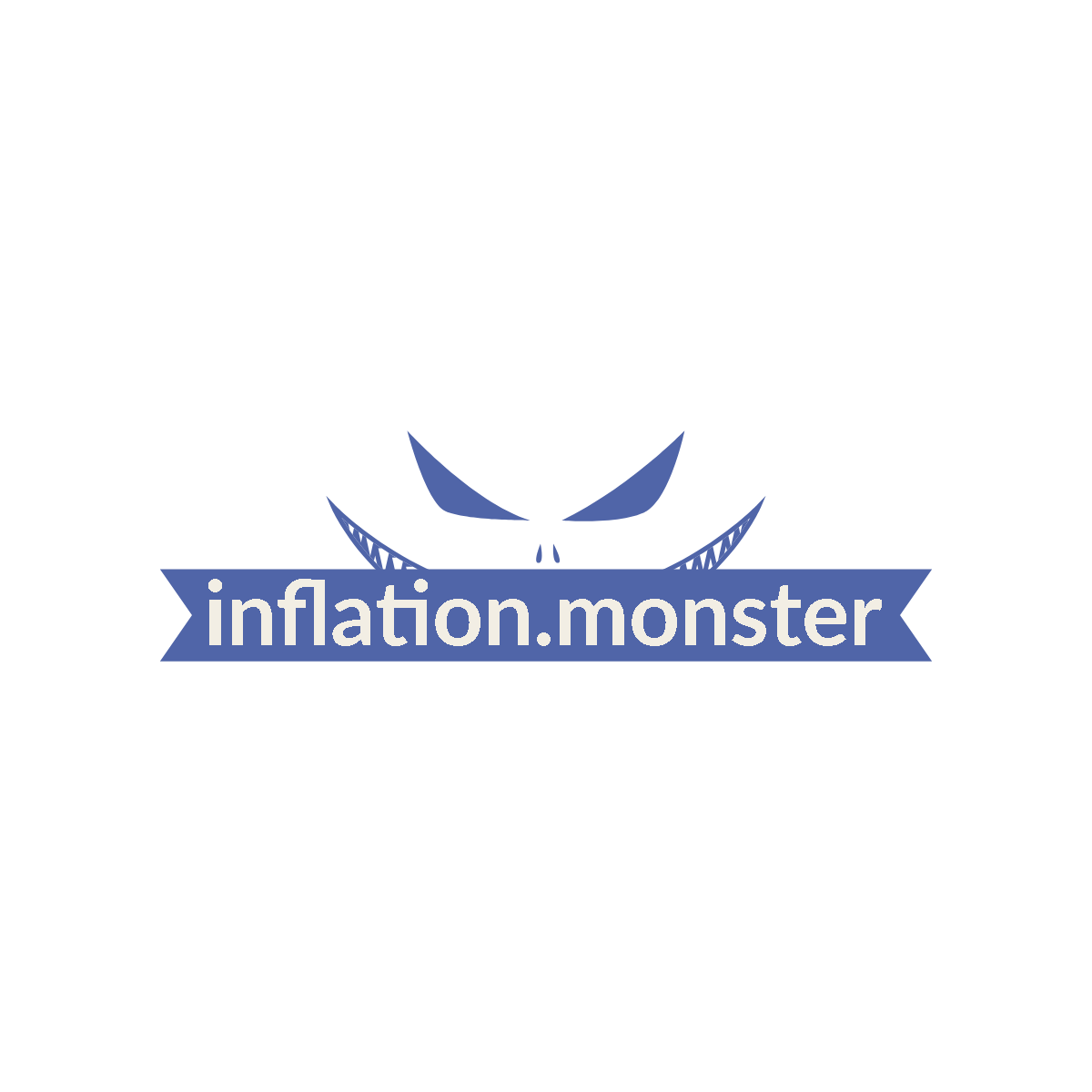In the world of economics, few monsters strike fear into the hearts of investors and consumers quite like inflation. It’s a beast that can wreak havoc on the value of money and disrupt the delicate balance of our financial systems. But what role do commodity prices play in this tale of rising prices and shrinking purchasing power? Join us as we embark on a journey to unravel the mysteries behind inflation, exploring the intricate relationship between inflation and commodity prices. Brace yourselves, for we are about to face the inflation monster head-on.

Understanding Inflation
Inflation refers to the sustained increase in the general price level of goods and services in an economy over a period of time. When inflation occurs, the purchasing power of money decreases, and individuals are able to buy fewer goods and services with the same amount of money. This can have a significant impact on the overall economy, as it affects consumers’ ability to afford basic necessities and businesses’ profitability.
Causes of Inflation
Inflation can be caused by various factors, including both demand-side and supply-side factors. Demand-pull inflation occurs when the demand for goods and services exceeds their supply, leading to an increase in their prices. This can be caused by factors such as increased consumer spending, expansionary fiscal or monetary policies, or an increase in exports. On the other hand, cost-push inflation occurs when the cost of production increases, leading to an increase in the prices of goods and services. This can be caused by factors such as an increase in the cost of raw materials, labor wages, or taxes.
Types of Inflation
There are different types of inflation, including mild or moderate inflation, hyperinflation, deflation, and stagflation. Mild or moderate inflation refers to a gradual increase in prices over time, usually within a manageable range. Hyperinflation, on the other hand, refers to an extreme and rapid increase in prices, often exceeding 50% per month. Deflation, on the contrary, occurs when there is a sustained decrease in the general price level of goods and services. Stagflation is a unique situation where an economy experiences both high inflation and high unemployment rates.
The Relationship Between Inflation and Commodity Prices
Commodity prices can have a significant impact on inflation, and there exists a strong relationship between the two. When commodity prices increase, it often leads to higher production costs for businesses, which results in higher prices for the final goods and services they produce. This relationship is particularly evident in industries and sectors that heavily rely on commodities, such as energy, agriculture, and metals. Additionally, changes in commodity prices can also influence consumer spending patterns, as individuals may need to allocate more of their budget towards essential goods and services, leaving less for discretionary spending.
Impact of Commodity Prices on Inflation
The impact of commodity prices on inflation is multifaceted and can vary depending on the specific circumstances. When commodity prices increase, businesses may pass on these higher costs to consumers in the form of higher prices for their products. This results in higher inflation rates, as more money is needed to purchase the same basket of goods and services. Additionally, higher commodity prices can also have indirect effects on inflation, such as a decrease in consumer purchasing power and a decrease in business profits. These indirect effects can further exacerbate inflationary pressures in the economy.
Factors Influencing Commodity Prices
Multiple factors can influence commodity prices, making them inherently volatile. Supply and demand dynamics play a crucial role in determining commodity prices. For example, changes in weather conditions or natural disasters can impact agricultural production, leading to fluctuations in prices of food commodities. Political stability or geopolitical tensions in major oil-producing regions can affect oil prices. Additionally, changes in global economic conditions, exchange rates, and investor sentiment can also have a significant impact on commodity prices.
Historical Trends and Correlations
Historically, there have been correlations between commodity prices and inflation rates. Researchers and economists have observed that periods of high inflation are often accompanied by high commodity prices. This is because higher inflation erodes the purchasing power of money, making commodities relatively more attractive as a store of value. Additionally, commodity prices can also be influenced by global economic factors, such as economic growth, interest rates, and currency fluctuations, which in turn can impact inflation rates.
Commodity Prices as an Indicator of Inflation
Commodity prices can be used as an indicator or a proxy for inflation, as they often reflect changes in production costs and consumer spending patterns. Economists and policymakers often use commodity price indices, such as the Commodity Price Index (CPI), to track changes in prices of essential commodities. By monitoring these indices, they can get a sense of the inflationary pressures in the economy. However, it is important to note that commodity price indices may not always align perfectly with overall inflation rates, as other factors can influence the general price level of goods and services.

Critiques and Limitations
While commodity price indices can provide valuable insights into inflation, they also have certain limitations. One of the limitations is that commodity prices may not fully capture the entire range of goods and services that contribute to inflation. For example, services or non-commodity goods may have different inflationary trends compared to tangible commodities. Additionally, commodity price indices may be influenced by short-term factors, such as supply disruptions or temporary changes in demand. Thus, it is crucial for policymakers and analysts to consider multiple indicators and economic data when assessing and forecasting inflation.
Different Perspectives on Inflation and Commodity Prices
There are various economic perspectives on the relationship between inflation and commodity prices. The Keynesian perspective suggests that changes in commodity prices can have both short-term and long-term effects on inflation. According to Keynesians, increases in the prices of key commodities, such as oil or food, can lead to higher production costs and reduced consumer purchasing power, which can subsequently drive up overall inflation rates. On the other hand, the monetarist perspective emphasizes the importance of money supply in determining inflation, suggesting that changes in commodity prices may not have a direct impact on overall inflation rates. Lastly, the Austrian perspective focuses on the market forces of supply and demand and highlights the role of market distortions, such as government interventions or regulations, in influencing both commodity prices and inflation.
Government Regulation on Commodity Prices
Governments often intervene in commodity markets to regulate prices and mitigate the impact of price volatility on consumers and producers. They may implement price controls, setting maximum or minimum prices for certain commodities, to ensure affordability or prevent exploitative practices. These interventions can have short-term effects on inflation rates by influencing the prices of key commodities. However, prolonged government intervention and price controls can also create distortions in the market, leading to inefficiencies and unintended consequences.
Price Controls and Subsidies
In addition to regulating commodity prices, governments may also provide subsidies to support specific industries or sectors. Subsidies can help offset the cost of production or lower consumer prices for essential goods and services. These subsidies aim to promote affordability and ensure the availability of key commodities that are vital for the economy. However, excessive reliance on subsidies can strain government budgets and create dependencies that may not be sustainable in the long run.
Impact of Government Policies on Inflation
Government policies can have a significant impact on inflation rates, including those related to commodity prices. Expansionary fiscal policies, such as increased government spending or tax cuts, can stimulate demand and potentially drive up inflation rates. Additionally, monetary policies, such as adjustments to interest rates or money supply, can also influence inflation by affecting borrowing costs or consumer spending. Therefore, policymakers need to carefully consider the potential inflationary effects of their decisions when formulating and implementing economic policies.
Global Commodity Markets
Commodities are traded on global markets, and their prices can be influenced by global economic conditions. Major commodity exchanges, such as the Chicago Mercantile Exchange or the London Metal Exchange, provide platforms for buyers and sellers to trade commodities. Global commodity markets integrate various players, including producers, intermediaries, investors, and consumers from around the world. Changes in global commodity prices can have far-reaching effects, impacting both domestic and international economies.
Effect of Global Events on Inflation
Global events, such as economic crises, political instability, or natural disasters, can have significant implications for inflation rates. These events can disrupt global supply chains, impact commodity production or distribution, and lead to price fluctuations. For example, a geopolitical conflict in a major oil-producing country can disrupt oil supplies, leading to higher oil prices and potentially driving up inflation rates globally. Therefore, it is important for policymakers and businesses to stay informed about global events and their potential impact on commodity prices and inflation.
Import and Export Implications
Commodity prices and inflation have implications for international trade. Countries that rely heavily on imports of essential commodities may face challenges when commodity prices rise, as it increases their import costs and potentially leads to higher inflation rates. On the other hand, countries that are net exporters of commodities may benefit from higher commodity prices, as it can boost their export revenues and contribute to economic growth. These import and export implications highlight the interconnectedness of global commodity markets and the potential impact on inflation rates across different economies.

Benefits of Investing in Commodities during Inflation
During periods of inflation, investing in commodities can offer certain benefits. Commodities are often considered tangible assets, and their prices tend to rise during inflationary periods, providing a potential hedge against inflation. Additionally, the demand for certain commodities, such as gold or oil, may increase during times of inflation, further driving up their prices. By including commodities in their investment portfolios, individuals and investors can potentially protect their wealth and diversify their investments.
Types of Commodity Investments
Investing in commodities can be done through various financial instruments, such as futures contracts, exchange-traded funds (ETFs), or commodity-specific mutual funds. Futures contracts allow investors to buy or sell a certain quantity of a commodity at a predetermined price and date in the future. ETFs and mutual funds provide exposure to a basket of commodities, offering investors a convenient way to invest in a diversified range of commodities. Each type of commodity investment has its own advantages and considerations, and individuals should carefully evaluate their investment goals and risk tolerance before investing.
Diversification and Risk Management
Investing in commodities can provide diversification benefits to an investment portfolio. Including commodities in a diversified portfolio can help reduce overall portfolio risk, as commodities tend to have low correlations with other asset classes, such as stocks or bonds. This means that the prices of commodities may not move in tandem with other investments, potentially reducing the impact of market volatility on the portfolio. However, it is important to note that commodity markets can be volatile, and investing in commodities carries its own risks. Therefore, individuals should carefully assess and manage the risks associated with commodity investments.
Volatility in Commodity Markets
Commodity markets are known to be volatile, with prices often experiencing significant fluctuations within short periods of time. This volatility can be driven by various factors, including changes in global supply and demand dynamics, geopolitical events, or speculative trading activities. The inherent volatility in commodity markets can pose challenges for investors and businesses, as it can lead to uncertainty and potential financial losses. Therefore, individuals and businesses involved in commodities need to closely monitor market conditions and implement appropriate risk management strategies.
Impact of Commodity Price Fluctuations on Inflation
The fluctuations in commodity prices can have a direct impact on inflation rates. Price increases in key commodities can raise production costs for businesses, resulting in higher prices for consumers. This direct impact is particularly evident in industries that heavily rely on commodities, such as energy or agriculture. Additionally, commodity price fluctuations can also indirectly affect inflation rates by influencing consumer spending patterns and business investment decisions. Therefore, policymakers and central banks closely monitor commodity price movements as part of their efforts to manage inflation.
Mitigating Risks of Price Volatility
Given the volatility in commodity markets, businesses and individuals often employ various strategies to mitigate the risks associated with price fluctuations. Hedging is a common risk management technique used by market participants to protect against adverse price movements. Hedging involves taking offsetting positions in the futures markets or using financial derivatives to lock in prices for future transactions. This helps businesses and investors manage price risks and stabilize their cash flows. Additionally, having a diversified portfolio that includes different types of commodities can help mitigate the impact of price volatility on overall returns.
Definition of Price Shocks
Price shocks refer to sudden and significant changes in prices, often resulting from unexpected events or disruptions in supply and demand dynamics. Price shocks can be either positive or negative, depending on the specific circumstances. Positive price shocks occur when prices surge due to unexpected increases in demand or supply shortages. Negative price shocks, on the other hand, happen when prices drop sharply, often due to unexpected declines in demand or increases in supply. These price shocks can have significant implications for inflation rates and the overall economy.
Examples of Historical Price Shocks
Throughout history, there have been numerous instances of price shocks that have impacted commodity prices and inflation rates. One notable example is the oil price shock in the 1970s, which was triggered by OPEC’s decision to cut oil production and raise prices. This led to a significant increase in oil prices, which had profound effects on inflation rates and the global economy. Another example is the recent price shock experienced in the agricultural sector, where extreme weather conditions, such as droughts or floods, resulted in significant decreases in crop yields and substantial price increases for food commodities.
Effects of Price Shocks on Inflation
Price shocks can have significant effects on inflation rates. Positive price shocks, such as sudden increases in oil or food prices, can directly contribute to higher inflation rates, as businesses pass on these higher costs to consumers. This results in a decrease in purchasing power and an increase in the general price level of goods and services. Negative price shocks, on the other hand, can result in deflationary pressures, as businesses reduce prices to stimulate demand in response to declining sales. These price shocks can disrupt economic stability and require policymakers to implement appropriate measures to mitigate their impact.
Indicators of Future Inflation
Predicting future inflation rates can be challenging, as it depends on multiple factors and economic dynamics. However, certain indicators can provide insights into potential inflationary pressures. Key indicators include changes in consumer prices, wage growth, money supply, and interest rates. Increasing consumer prices or rising wage growth can be early signs of potential inflationary pressures. Additionally, changes in the money supply or interest rates can influence the overall cost of borrowing and consumer spending, offering insights into future inflation trends.
Inflation Hedging Strategies
To protect themselves against the potential impact of inflation, individuals and businesses can employ inflation hedging strategies. One common strategy is investing in inflation-protected securities, such as Treasury Inflation-Protected Securities (TIPS), which offer a guaranteed return that adjusts with inflation rates. Another strategy is investing in assets that tend to perform well during inflationary periods, such as real estate, commodities, or certain sectors, such as energy or materials. Additionally, individuals can focus on increasing their income through negotiating wage increases or investing in assets that generate regular income, helping to mitigate the erosion of purchasing power due to inflation.
Adapting to Changing Economic Conditions
Inflationary environments can require individuals, businesses, and policymakers to adapt to changing economic conditions. Individuals may need to adjust their spending habits, prioritize essential goods and services, and consider investing in assets that can provide a hedge against inflation. Businesses may need to revisit their pricing strategies, manage production costs, and evaluate their supply chains to mitigate the impact of price fluctuations. Policymakers need to carefully monitor inflation rates, implement appropriate monetary policies, and balance the need for economic stability with sustainable growth. Adapting to changing economic conditions is crucial for navigating the challenges posed by inflation and commodity price fluctuations.
In conclusion, understanding the relationship between inflation and commodity prices is essential for individuals, businesses, and policymakers. Commodity prices can have a significant impact on inflation rates, and changes in commodity prices can be both a driver and an indicator of inflation. Governments may intervene in commodity markets, implementing regulations or price controls to manage inflationary pressures. Global events and trade dynamics also influence commodity prices and their impact on inflation. Investing in commodities can serve as a potential hedge against inflation, but it comes with its own risks and considerations. Price shocks can disrupt inflation rates and require appropriate responses. By closely monitoring indicators and adapting to changing economic conditions, individuals and stakeholders can navigate the complexities of inflation and commodity price fluctuations.




